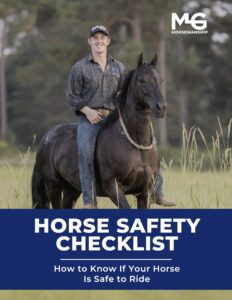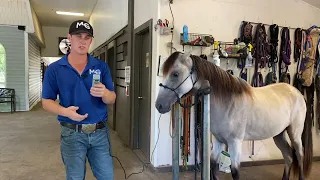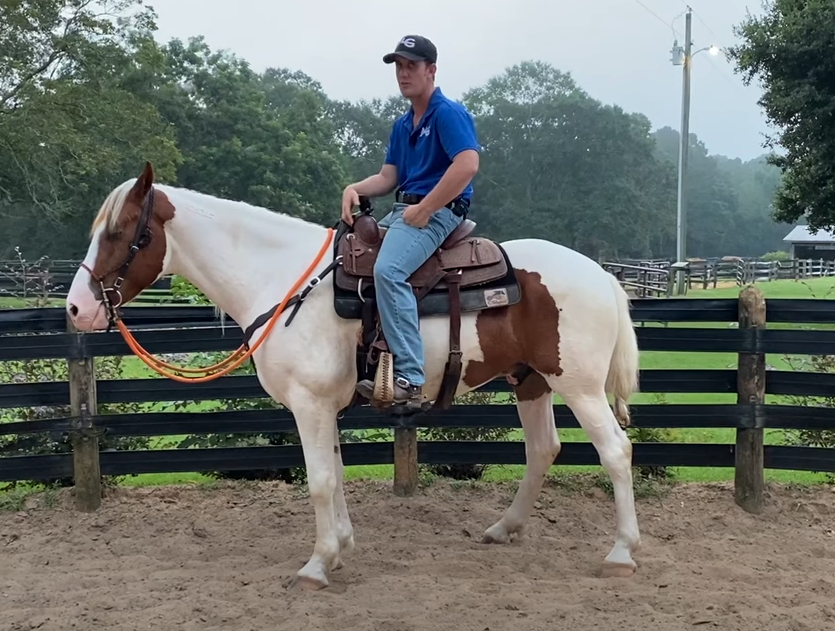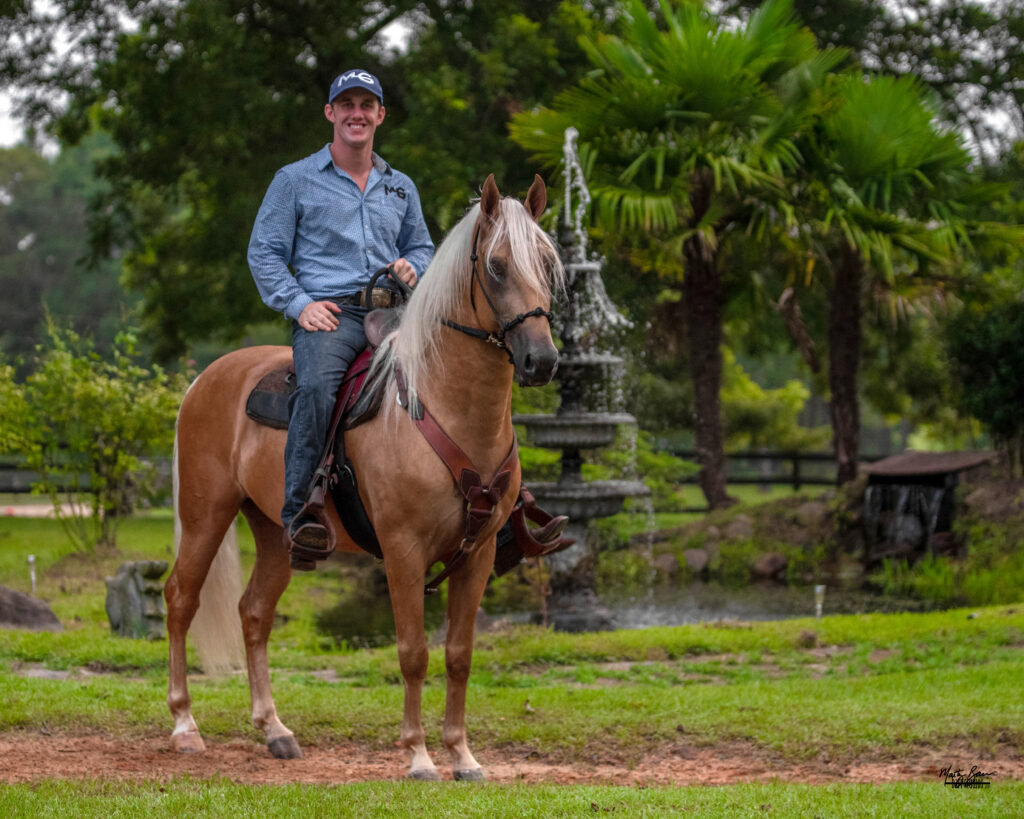Today we are talking about clipping your horse for the first time.
Watch The Video Here Or Continue Reading Below!
The Approach of Clipping for the first time
What’s going on guys! It’s Michael Gascon and we’re back and we are doing the very first clipping on a young colt. This is Leo. Leo is a two-year-old Paso. He’s just getting halter broke and getting handled. We’re going to be clipping his whiskers off and giving him some clipper training. He’s about as sensitive of a young colt as you’re going to find.
How To Tie Your Horse When Clipping
So, we’re going to show you how we approach clipping your horse for the first time. Number one, I love a hitching post for this. A lot of people want to do this stuff freehanded. The problem with freehand is you put yourself in a position where you put yourself in danger. If the horse moves around, you can’t hold them, so they find a release.
GIVE YOUR HORSE A LITTLE FREEDOM
Notice I leave him kind of loose. He still has movement here and freedom. He’s used to being tied like this. Whenever I show him these clippers, I’m going to show it to him just like any other obstacle. I’m not even trying to clip anything right now. You see he’s a little uneasy and I’m just bringing it to him. If he were to move around or sit back or anything like that I would just hang out with this exact same expression on my face. Like it’s just another day at the office.
Then from there once I do that I will start. I want to put the blade on his skin, with the flat side of the blade down, and move upward. I don’t want the teeth to scrape him so I’m going to do just like that on his muzzle. Whether I’m cutting hair or not is not important. What I mean is, if you miss don’t point the teeth closer to him. Just give another pass and another pass and another pass. Every time I just pass it right beside him.
It’s A Learning Process
It’s going to be smoother and easier when he realizes that nothing’s happening. There we go. What I mean is that he has liberties. Look how much he can move his head. I don’t want him to feel constricted until he messes up. Him messing up would be him trying to avoid this and try to run away in this little space. If he did, we would start letting the walls close in on him. We would pull a little bit tighter, try again. A little bit tighter, try again. Until there was no movement from the colt.
What I like about this is that this method you’re not twitching them. You’re not sedating them. Even if we had to put him in a real bind and tie him real tight to be able to get this done, he’s going to remember all of this. The next time he’s going to try to do it looser so that he doesn’t get tied up tighter. It’s a real learning process when clipping your horse for the first time.
Think of Safety First when clipping
Whenever I’m doing this on a hitching post, I know how far he’s tied, and I know how far his head can move. I don’t want my face any closer than this because I don’t want him bumping into me. I’m always kind of pointing my shoulder towards them making sure that it’d be very difficult for him to do anything to me. As long as your brain feels like you are completely safe, then you’re not going to shy and have involuntary responses when clipping your horse for the first time.
Very nice!
Notice whenever I do under the eye, I put the clipper plate on his face so that he can’t bump his eye. If he moved his head my way the clipper wouldn’t be out here hovering. I’m putting it literally on his head, so that if he was to move, the blade would move with him. Just like that he’s starting to look a lot more handsome. Like he’s just been to the barber shop. Seeing as this is his first time, I like to stick to the muzzle and the eyes.
I would give him a couple of sessions like that. The next time that it grows back I’ll trim up his muzzle and his eyes. Then give him two to three sessions until there’s no hesitation. Then, I’ll come up here and do the ears and the bridle path. With the same type of ideology, he has the freedom to move.
Keep The Namaste Energy
If he does too much of that and tries to avoid it, I don’t want to get more excited about it. I don’t want to get more antsy or aggressive. I just want to slowly, but surely, start taking his liberty away by tightening up the lead rope. Doing this until there’s nowhere for him to go. So, we can keep this quiet namaste type energy. So much of clipping, ear sensitivity, and injections have to do with our energy. We put the horse in a position where they can get the better of us. Then whenever we’re not having it our way, we get too aggressive. We get too excited through our body and we’re bringing that energy.
I’ve met a lot of trainers that whenever they think of clipping, it’s in a negative light. Already when they come towards that horse they’re coming as if they were about to get into a fight.
I come to them with the clippers just as if I was a flag stick, tarp, or soccer ball. It’s no different, it’s just the obstacle they must accept. They have to be very namaste relaxed, exhaled type of body energy. We’re just going to bring it to him, and bring it to him, and bring it to him, until he relaxes and releases. When he does that, we’ll get his first clipping just like that. That’s his first clipping ,very successful! A good step in the right direction. Thank you guys so much for watching! Let me know how it goes and see you in the next video!
Check out more free training resources HERE!
HOW SAFE IS YOUR HORSE?
Can you control every part of his body, even if he’s scared or unsure?
There are some specific things that I believe every horse should be able to do before he or she is considered completely safe to ride. So that you can see how safe your horse is to ride, I’ve created this FREE Horse Safety Checklist.





